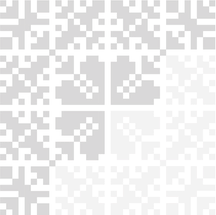C7 M1 L2 Grammar
7 | Modul 1: Gramatika
Svakog gosta tri dana dosta
7 | 1 | Lekcija 2: Ljetni odmor
| Instrumental Case
The most common use of the Instrumental case is when we want to indicate who or what we do things with. In other words, we use the Instrumental case when we want to express that we are:
doing something with someone Pričam s prijateljicom. - I talk with my friend | |
having something with something Sendivič s majonezom. - A sandwich with mayonnaise. |
The basic ending for the Instrumental case for masculine and neuter nouns in the singular is –om (–em if a noun ends in a palatal consonant, such as muž, prijatelj, bratić, polje). The ending for feminine nouns in the singular is also –om. In the plural, the basic ending for masculine and neuter gender is –ima, and for feminine is –ama.
Singular
case | masculine | neuter | feminine | |
Nominative sg. | ujak | bratić | dijete | mama |
Instrumental sg. | ujakom | bratićem | djetetom | mamom |
Ines putuje… | s ujakom | s bratićem | s djetetom | s mamom |
Plural
case | masculine | neuter | feminine | |
Nominative sg. | djed | bratići | dijete | sestrične |
Instrumental sg. | djedovima | bratićima | djecom | sestričnama |
Ines putuje… | s djedovima | s bratićima | s djecom | sa sestričnama |
Be careful, masculine nouns that end in –c will also take the ending –em in the singular form (like nouns that end in a palatal consonant). See the example.
Ines često putuje… | …sa stricem… | …i nosi fotoaparat s blicem |
| Instrumental With Preposition s/sa
The instrumental case is used with several prepositions, but the most common one is the preposition s (meaning “with”) or its variant sa. The variant sa is used when the following word begins with letters s, š, z, ž or consonant clusters such as ks-, ps-, pš-. Examples when to use the variant sa:
Pričam sa Silvijom. | I’m talking with Silvija. |
Pričam sa Šimunom. | I’m talking with Šimun. |
Pričam sa Zoranom. | I’m talking with Zorana. |
Pričam sa Živkom. | I’m talking with Živko. |
Pričam sa Ksenijom. | I’m talking with Ksenija. |
Igram se sa psom. | I’m playing with (my) dog. |
Recepti sa pšenicom. | The recipes with wheat. |
| Pronouncing the Preposition s
The preposition s is always pronounced as one with the following word, e.g. s tatom /statom/, s mamom /smamom/. However, a word following the preposition s will determine whether a sound is voiceless (for example, s = [s]) or voiced (s = [z]).
The preposition s is usually voiceless and pronounced like [s]. However, it turns into the voiced [z] before voiced consonants b–d–g–dž–đ. Listen to these examples:
audio | spelling | pronunciation |
s bratom | /zbratom/ | |
s đakom | /zđakom/ | |
s djedom | /zdjedom/ | |
s djevojkom | /zdjevojkom/ | |
s društvom | /zdruštvom/ | |
s džemom | /džemom/ | |
s grupom | /zgrupom/ |
When the preposition s comes before a word beginning with č–ć, the sounds [s č] form a sound equivalent to [šč] or [šć].
7.1 Zadatak 4. Gramatika
7.1 Zadatak 5. Prijedlog s/sa
Complete the sentences so they are true for you by using the following words: tata, mama, brat, sestra, prijatelj, prijateljica, pas. Be careful, you also need to use a preposition s/sa before the noun.
7.1 Zadatak 6. Izgovor
Listen to and look at the following phrases. Then choose if the s is pronounced as it is spelled, or if the pronunciation and the spelling are different.
| More About -ovati, -evati, -ivati Verbs
In the previous lesson you encountered this new set of verbs in their infinitive form. So far we have discussed only the -ovati verbs. Here is an example of a verb that has the -ivati ending in its infinitive form.
DOPIS-IVA-TI SE* | |||||
SINGULAR | PLURAL | ||||
ja | dopis-u-jem se | mi | dopis-u-jemo se | ||
ti | dopis-u-ješ se | vi | dopis-u-jete se | ||
on/-a/-o | dopis-u-je se | oni/-e/-a | dopis-u-ju se | ||
* With the reflexive verb, such as dopisivati se, you need to be careful about word order. The position of the reflexive pronoun se will always be the second word in a sentence. In other words, if you start the sentence with a personal name or a pronoun the reflexive pronoun se will follow immediately after the personal pronoun/name. However, if you omit the personal name or a pronoun, the reflexive pronoun se will follow after the verb. Look at the examples below.
With personal pronoun/name | Without personal pronoun/name |
Ja se dopisujem s prijateljem. | Dopisujem se s prijateljem. |
On se dopisuje s bratom. | Dopisuje se s bratom. |
Ona se dopisuje s prijateljicom. | Dopisuje se s prijateljicom. |
Images used in this document are from these sources.



















